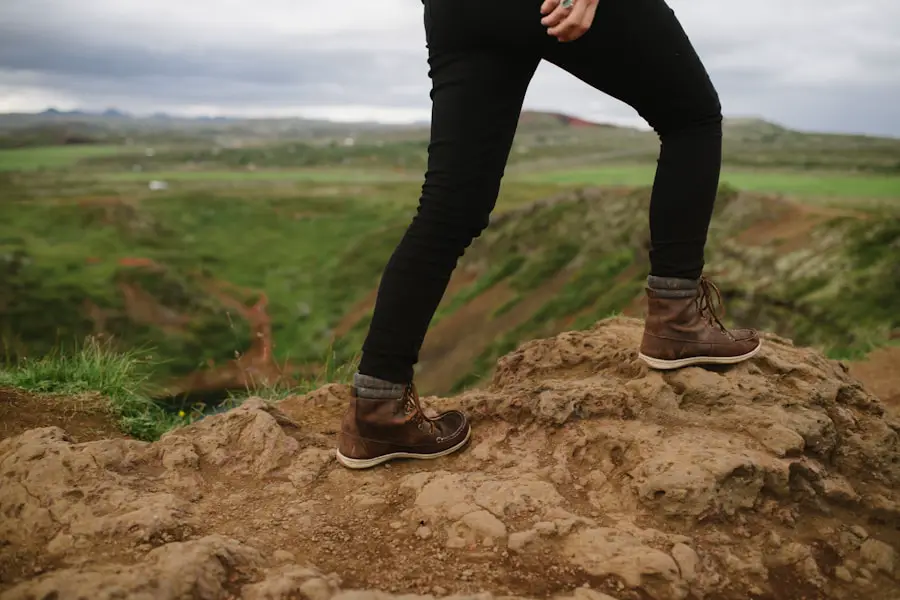Dr. Martens, often affectionately referred to as “Docs,” is a brand synonymous with durability, style, and a rebellious spirit. Founded in 1947 by Klaus Märtens, a German doctor, the brand initially aimed to create a comfortable and supportive boot for post-war workers.
The iconic air-cushioned sole, patented in 1960, revolutionized footwear by providing unparalleled comfort and shock absorption. Over the decades, Dr. Martens has transcended its utilitarian roots, becoming a cultural icon embraced by various subcultures, from punk rockers to fashionistas.
The brand’s distinctive yellow stitching and smooth leather finish have made it a staple in wardrobes around the globe. The evolution of Dr. Martens is a fascinating journey through social movements and fashion trends.
In the 1960s and 1970s, the boots became emblematic of youth rebellion, adopted by the working class and later by punk rock bands. This cultural significance has only deepened over time, with collaborations and limited editions that keep the brand relevant in contemporary fashion. Today, Dr.
Martens offers a wide range of styles, from classic 1460 boots to sandals and shoes, catering to diverse tastes while maintaining the core values of comfort and durability that have defined the brand since its inception.
Dr. Martens boots are characterized by several distinctive features that contribute to their popularity and functionality. One of the most notable aspects is the air-cushioned sole, which provides exceptional comfort and support for prolonged wear.
This sole is made from a unique PVC compound that not only absorbs shock but also offers excellent traction on various surfaces. The combination of these qualities makes Dr. Martens boots suitable for both urban environments and rugged terrains, although their primary appeal lies in their aesthetic versatility.
Another defining characteristic is the high-quality leather used in the construction of Dr. Martens footwear. The brand offers various leather types, including smooth leather, suede, and patent finishes, each with its own unique texture and appearance.
The leather is treated to enhance durability while allowing for a degree of breathability, which is essential for comfort during extended wear. Additionally, the iconic yellow stitching and Goodyear welt construction are hallmarks of Dr. Martens boots, ensuring that they are not only stylish but also built to last.
Key Takeaways
- Dr. Martens is a well-known footwear brand that originated in the UK and is famous for its durable and stylish boots.
- The characteristics of Dr. Martens include their signature air-cushioned sole, durable leather material, and distinctive yellow stitching.
- When considering Dr. Martens for hiking, factors to consider include the terrain, weather conditions, and personal comfort preferences.
- Advantages of using Dr. Martens for hiking include their durability, ankle support, and stylish design.
- Limitations of Dr. Martens for hiking include their weight, lack of breathability, and potential discomfort during long hikes.
When selecting appropriate footwear for hiking, several critical factors must be taken into account to ensure safety, comfort, and performance on the trail. First and foremost is fit; hiking boots should provide a snug yet comfortable fit to prevent blisters and discomfort during long treks. A well-fitted boot will allow for some movement of the toes while keeping the heel securely in place.
It’s advisable to try on hiking boots with the socks you intend to wear on your hike to ensure an accurate fit. Another essential consideration is the type of terrain you will be traversing. Different hiking environments demand specific features in footwear.
For instance, rocky or uneven trails require boots with robust soles that offer excellent traction and stability. Waterproofing is also crucial if you anticipate wet conditions or stream crossings; many hiking boots come with waterproof membranes that keep feet dry while allowing moisture to escape. Additionally, ankle support is vital for preventing injuries on challenging trails; higher-cut boots can provide added stability for the ankles.
Dr. Martens boots offer several advantages that can make them appealing for hiking enthusiasts, particularly those who prioritize style alongside functionality. One of the most significant benefits is their comfort level; the air-cushioned sole provides excellent shock absorption, which can be particularly beneficial during long hikes on hard surfaces or uneven terrain.
This feature helps reduce fatigue in the feet and legs, allowing hikers to cover greater distances without discomfort. Moreover, Dr. Martens are known for their durability.
The high-quality leather used in their construction can withstand wear and tear better than many traditional hiking boots made from synthetic materials. This durability means that a pair of Dr. Martens can last for years with proper care, making them a worthwhile investment for those who enjoy both urban exploration and outdoor adventures.
Additionally, their stylish design allows wearers to transition seamlessly from hiking trails to social settings without needing to change footwear.
Despite their many advantages, there are notable limitations to consider when using Dr. Martens as hiking footwear. One significant drawback is their weight; compared to specialized hiking boots that are designed with lightweight materials, Dr.
Martens can feel heavier on the feet over long distances. This added weight may lead to fatigue more quickly than lighter alternatives, especially during extended hikes or when navigating steep inclines. Another limitation is the lack of specific features found in dedicated hiking footwear.
For instance, while Dr. Martens provide decent traction, they may not offer the same level of grip as specialized hiking boots equipped with advanced outsole technologies designed for rugged terrains. Additionally, many models lack waterproofing features that are standard in many hiking boots; this can be a critical factor if you plan to hike in wet or muddy conditions where keeping your feet dry is essential.
If you decide to take your Dr. Martens on a hiking adventure, there are several tips to ensure a comfortable and enjoyable experience. First, it’s crucial to break in your boots before embarking on a long hike.
Wearing them around your home or on short walks can help soften the leather and mold them to your feet, reducing the risk of blisters during your hike. Choosing the right socks is equally important; opt for moisture-wicking socks made from materials like merino wool or synthetic blends that help keep your feet dry and comfortable throughout your trek. Additionally, consider using insoles designed for added arch support if you plan on hiking longer distances; this can enhance comfort significantly and provide better support for your feet.
Alternative Hiking Footwear Options
While Dr. Martens can be suitable for certain hiking scenarios, there are numerous alternative footwear options specifically designed for hiking that may offer enhanced performance and comfort on the trails. Traditional hiking boots are often constructed with lightweight materials that provide excellent support without adding unnecessary weight.
Brands like Merrell, Salomon, and Columbia offer a range of options tailored to different types of terrain and weather conditions. Trail running shoes have also gained popularity among hikers looking for lightweight alternatives that still provide adequate support and traction. These shoes are designed for agility and speed on varied terrains while offering breathability and comfort during warmer months.
For those who prefer a more minimalist approach, sandals designed for hiking can be an excellent choice in hot weather; brands like Teva and Chaco produce durable sandals with supportive straps and rugged soles suitable for light trails.
In summary, while Dr. Martens can serve as an alternative option for casual hikes or urban exploration due to their comfort and durability, they may not be the best choice for serious hiking endeavors where specialized features are essential for safety and performance on challenging terrains. Their weight and lack of advanced traction or waterproofing capabilities can hinder performance compared to dedicated hiking footwear.
Ultimately, whether Dr. Martens are suitable for hiking depends on individual preferences and the specific conditions of the hike planned. For those who prioritize style alongside functionality and are engaging in less demanding hikes, they can be a viable option; however, serious hikers should consider investing in footwear specifically designed for outdoor activities to ensure optimal comfort and safety on the trails.
If you’re looking for durable footwear for outdoor activities like hiking, you may also be interested in finding the best travel gear for other adventures. Check out this article on the best ski travel bags to ensure your equipment stays safe and secure during your winter trips. Additionally, if you enjoy golfing, you may want to invest in one of the best hard case golf travel bags for your next golfing getaway. And if you’re looking for the perfect gift for a female traveler in your life, be sure to check out this list of the best travel gifts for her.
Love travel? Join Our Facebook Community For More Tips.
FAQs

Are Dr. Martens good for hiking?
Dr. Martens are not specifically designed for hiking and may not provide the necessary support and traction required for long hikes on rugged terrain.
What are Dr. Martens shoes good for?
Dr. Martens shoes are known for their durability, style, and comfort. They are popular for everyday wear, casual outings, and urban environments.
Can Dr. Martens be used for light hiking?
While some people may use Dr. Martens for light hiking on well-maintained trails, they are not designed or recommended for hiking activities. It is best to use proper hiking boots for any type of hiking.
What features make a good hiking shoe?
Good hiking shoes should have sturdy construction, ankle support, a grippy outsole for traction, and waterproof or water-resistant materials to protect your feet from the elements.
What are the potential drawbacks of using Dr. Martens for hiking?
Using Dr. Martens for hiking can lead to discomfort, lack of support, and increased risk of slipping or injury due to the lack of specialized hiking features. It may also cause premature wear and tear on the shoes.
